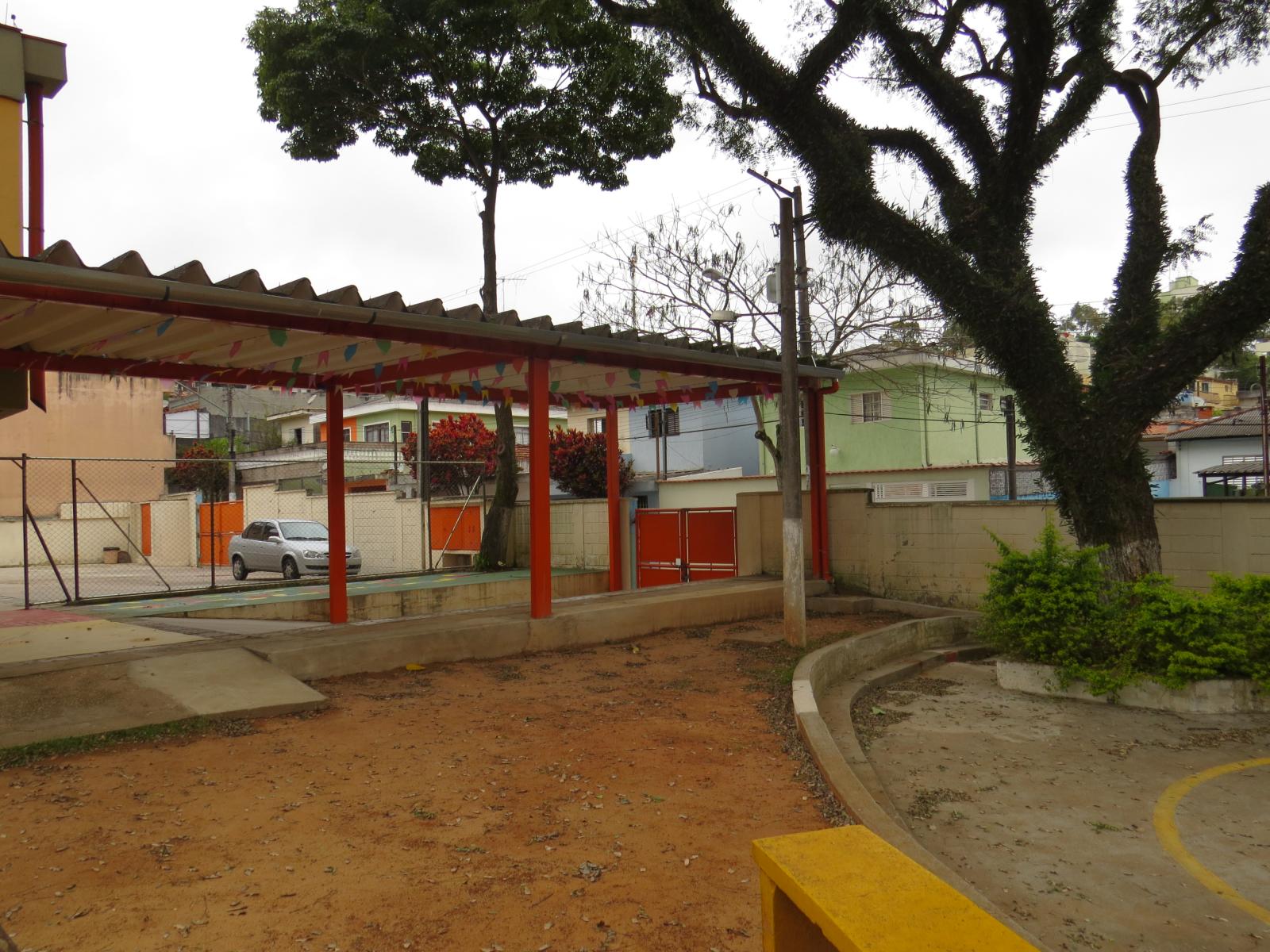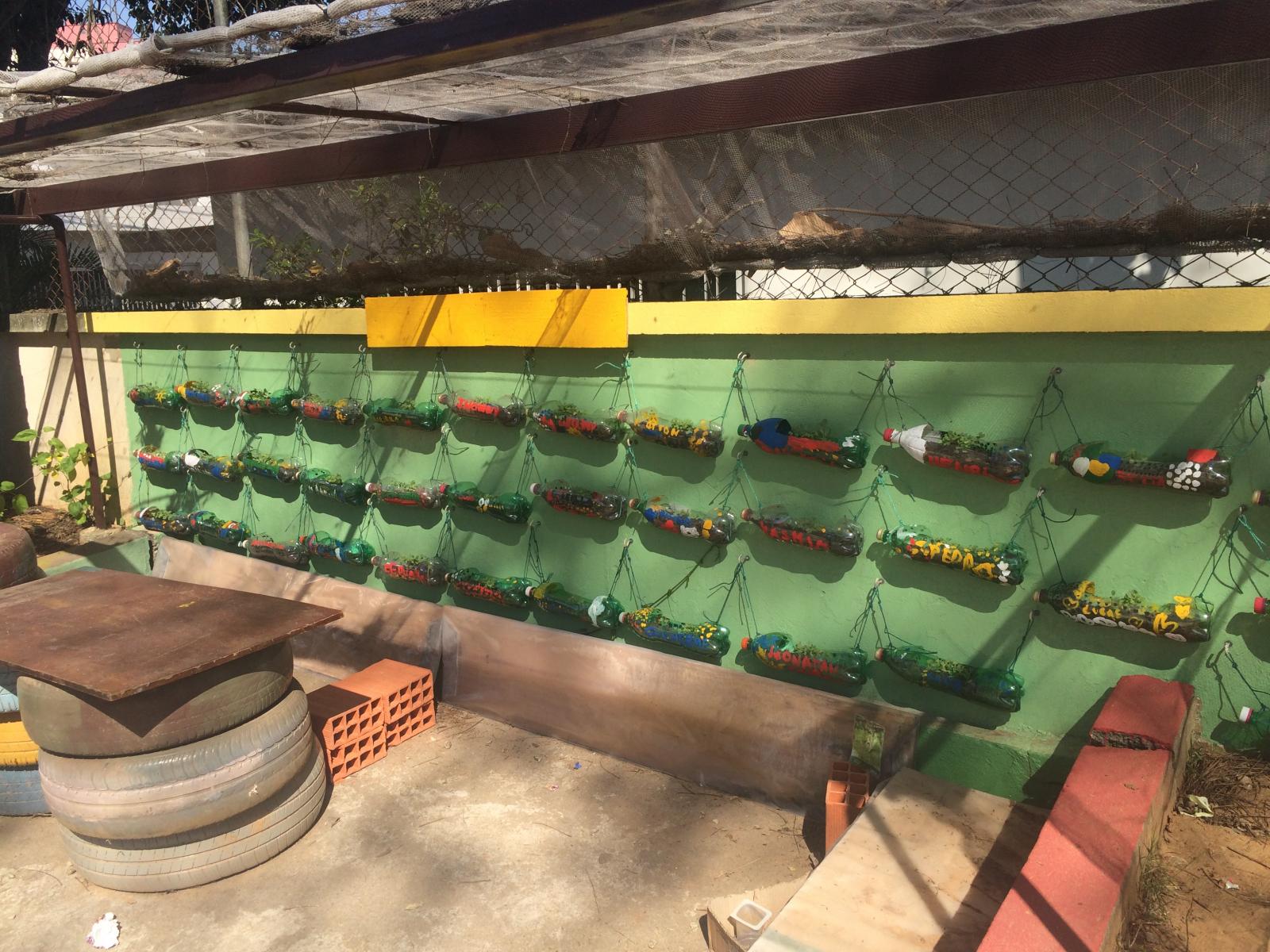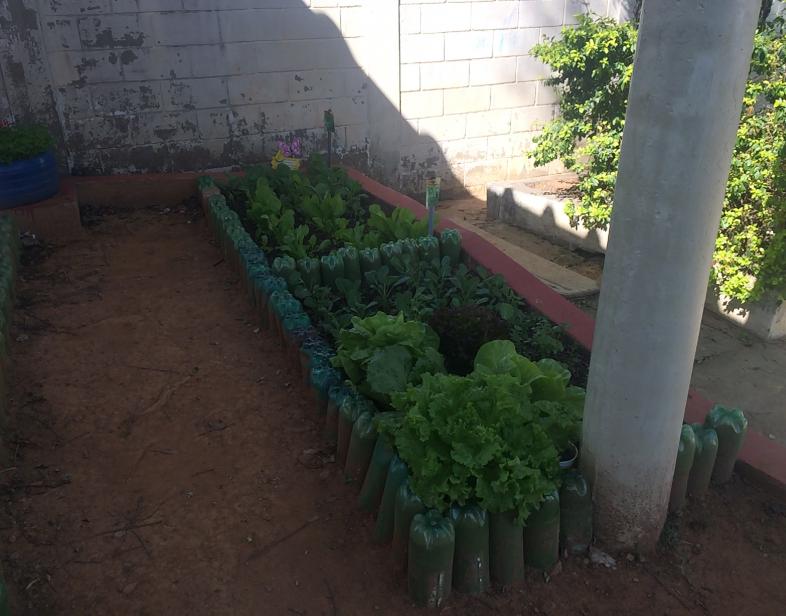An Overview Of Our Solution
We believe that we can change the behavior of an entire generation through basic education and we develop a work in a public school in the district of M'Boi Mirim (São Paulo, SP, Brazil), responsible for the education of children from 4 to 6 years old. The choice is due to the fact that, especially during his first seven years, the child will learn through the copying of behaviors and attitudes of his objects of affection. Until the age of seven, the child's sensor/motor has to be stimulated because it will be the base that, together with the affective, will respond to his neurological organization. Affective, motor and cognitive development will be the determinants of how this individual sees the world in his subsequent phases. The physical space of the school can be an inspiring and educative environment for the practice of sustainability
- Population Impacted: 606 people
- Continent: South America
Context Analysis
The subdistrict of M'Boi Mirim is located in the southern part of the municipality of São Paulo, the most populous in Brazil, with 12.1 million inhabitants, in the vicinity of the Guarapiranga Resevoir, an important reservoir of drinking water in the Metropolitan Region of São Paulo, whose region presents qualitative & quantitative criticality in water (ANA). It is a region with unfavorable geological conditions for urban occupation, that should be destined to the implantation of areas of environmental preservation & that, nevertheless, shelters more than 560 thousand inhabitants with 21.4% of the households in slums & 15% without sewerage system. It presents a low quality of life & a poor condition of human development, with more than 65% of the population in social classes D and E, with income between 1 and 3 minimum wages (IBGE). In comparison to the municipality average, the percentage of youths in the sub-district up to 14 years old (25.4%) is higher, violence rates are higher
Describe the technical solution you wanted the target audience to adopt
Our aim was to make the target public of the school (teachers, employees, students and community) aware of the predatory behavior we have in relation to the environment & the consumption of its resources without the perception of its finitude and, from there, improve its care with the school building and its surrounding environment, both spatially and in terms of management, so that this behavior could be incorporated & expanded into a larger environmental context (neighborhood, city, country, planet).
We have encouraged the target audience, from self-perception and perception of the benefits of a change of simple attitudes, to reduce the consumption of water and energy, to review its consumption, to implant contemplative & productive green areas, to manage organic & recyclable gardens & to understand the interferences that the conditions and characteristics of the environment (initially considered within their school building) could impact on their health, productivity & comfort.
Type of intervention
Describe your behavioral intervention
We sensitized the teachers and staff, through a process in Art Therapy where concepts such as individual ecology, respect, limits were worked out. The motto of this item was to educate the educator so that he could become an agent of transformation in acts and words. Aiming that we used as strategy the idea of the internal movement, the sensitization, to be accompanied by actions in the physical structure of the school, so that these changes were incorporated individually by its users. The pedagogical project also followed this guideline. The activities were all directed towards the perception that new behaviors with the sustainable look can generate comfort, beauty, economy, and new possibilities.Emotion is responsible for fixing the memory within our brain. We organized a work structure which purpose was to bring into the individual the own inner garden and then materialize it outside, in the school environment, in a directed way in the form of actions. The internal seed materialized into actions like vegetable garden, sowing, green curtain, etc ....The conception was to create an affective relationship between teachers, staff and students with the change of the building and its aesthetic improvement and, from there, to create an effective and permanent behavioral change through positive bonding. The aesthetic change of the building was also reflected in activities with scraps turned into art in individual activities
As needed, please explain the type of intervention in more detail
Our project employed the 3 types of intervention & the staff's awareness work was translated into pedagogical practices with the children; PET bottles were colored by them and transformed into sowing & they participated in the planting of the green curtain & vegetable garden, using the worm compost obtained with the compost to fertilize them, savoring the vegetables that were planted by them in some meals. The conscious consumption of water has been transformed into coloring activities & the brushing of the teeth after the meals happened to be made with the use of a glass of water. A child is also chosen as “the helper of the day” who put out the lights of the room when it was not being used.
Describe your implementation
The project started by performing technical analysis of the building & data collection which analysis found that the building's highest energy consumption was for lighting, and all classrooms were left with the lights on even when there was no occupation and there were no individual switches in the classrooms. Water consumption was analyzed & acoustic & lightning measurements were made. Energy consumption reduction scenarios were then proposed, including: turning off lights during idle times, the use of better performance lamps & automating the lighting system, as well as water consumption scenarios, including tap aerators, double flow valve in toilets & use of rain water for irrigation. In fact, only the individual switches at classrooms & tap aerators were installed. For the behavioral change we made a Process in Art Therapy with the goal of making teachers aware of internal ecology & the possibility of understanding sustainability matter as a day by day choice. Concomitantly, physical changes were incorporated into the pedagogical program & some practices that reflected the issues worked out with teachers and staff, including the students into the practice. At the same time, we carried out mosaic with constructive residues, lectures addressing all themes concerning sustainability, exercise of the individual ecological footprint, gardening, energy and water consumption awareness and the social impact of behavioral changes, the importance of amorousness in the conduct of children to make them agents of transformation of the world. The ultimate intention was to create a group identity for the school that would include staff, students & parents - setting behavior at a broader level. The success factors were the emotional involvement of everyone in the process and the creation of a sense of group and identity, led by a group of conscientious, inspired and empowered teachers. The main obstacles encountered were the very strong initial resistance of all, except for
External connections
The project was a voluntary initiative of the Assiah Institute which, together with the pedagogical coordination of the school, proposed to develop a case to show competent authorities that it is possible to improve energy efficiency, rational use of water and waste management in buildings schools that present an intensely replicated constructive pattern, promoting savings of public resources, environmental education and the practice of sustainability.
The fact that the work was carried out in a kindergarten school, still shows how children quickly absorb the concepts presented when it develops in a playful way, and still take this learning to their homes, influencing the behavior of parents and family.
The project also showed that it is possible to improve the conditions of thermal, acoustic and luminous comfort of the school building in order to ensure better health conditions and productivity of the users, which in a school represents better conditions and teaching and learning.
The work was consolidated with the adhesion of the coordinator of the school, with the participation of teachers and employees and parents.
The support of the water and energy concessionaires took place in the release of the consumption data of the building. Relevant government authorities, while recognizing the quality of the project, did not provide any support for its implementation
Who adopted the desired behaviors and to what degree?
The behavioral change took place from the pedagogical coordination and spread through the body of teachers and employees, both permanent and outsourced, who started to adopt rational use of water and energy, practices that, according to them, they have extended to their homes.
The assimilation of water and energy savings could be verified comparing the values projected by the consultants in the proposed scenarios versus the values obtained later as showed below.
The expected reduction of energy consumption with the individualization of classroom lighting in the idle periods (energy saving strategy 1) was estimated at 10%; however, after the implementation of the switches, the real savings reached 19.9%. This difference in value was due to the adoption of this practice of "turning off the lights" in other areas of the school.
The results of water saving were also higher than those projected with the installation of aerators on the taps (strategy 1 of water saving)
How did you impact natural resource use and greenhouse gas emissions?
The immediate energy savings in the evaluated period (2013-2017) with the simple strategy of "turning off the lights" during the periods of idleness of classrooms led to the reduction of 20,350 kg of CO2. The reduction could have been greater if we had the resources to implement the other strategies of reduction of energy consumption proposed by our consultancy (exchange of T8 fluorescent lamps for other more efficient, automation of the lighting system compatible with natural lighting and implantation of photovoltaic power generation system). However, it must also be considered that the hydraulic source is responsible for 65.2% of the Brazilian electric energy matrix (EPE) and that the reduction of water consumption, indirectly, favors the production of renewable energy. In recent years, characterized by strong droughts, the production of energy from the water source has been complemented by thermoelectric generation, with a higher emission of greenhouse gases.
What were some of the resulting co-benefits?
Integrated actions promoted the dissemination of knowledge about water resource management and renewable energy sources, waste management, soil and composting care, consumption patterns, lifestyle and ecological footprint calculations. The implementation of the vegetable garden allowed the cultivation in an organic form, without the use of agrochemicals, inserting the concept of local production. Proposals were presented to improve the conditions of thermal, acoustic and luminous comfort of the building in order to improve the health conditions and productivity of the users. All this knowledge created a culture of sustainability within the school, reflected in the subsequent actions that were adopted after our intervention that gave identity and cohesion to the group personified in the figure of "Joaquina", female allusion to the name of the school, represented by a doll made from waste. The adoption of pedagogical practices, aligned with the physical interventions in the building
Sustainability
In general, public resources are very poorly managed in Brazil; this reality is reproduced in public buildings with obsolete equipment, with maintenance problems, where there is a great waste of resources. In public schools the scenario is the same, with the aggravation of presenting the same models of architectonic projects, intensely replicated. Economic sustainability is based on public investments focused on improving the efficiency of buildings, with retrofit works that generate savings in short-, medium- and long-term expenditures. There is also the possibility of government subsidies that encourage the installation of photovoltaic panels for electric power generation, since school buildings have large roof areas
Return on investment
Three scenarios of interventions in the building were proposed. The investment was R $ 1,215.00, with an expected saving of 10% and a payback of 2.5 months. In electrical energy scenario, we also proposed 3 possible intervention sceneries, but only the individualization of the light ignition was installed in the classrooms; the investment was R $ 12,794.00, with a saving of 10% and payback in 77.4 months. In both, water and energy, however, the real savings were larger than those estimated due to the change of behavior in relation to the use of these resources. The water savings were 53.8%, with an avoided cost of R $ 67,340.00 over 5 years and energy savings of 19.9%, with an avoided cost of R $ 20,315.00 over 4 years.
How could we successfully replicate this solution elsewhere?
This solution was proposed only once, experimentally by the Assiah Institute, in a municipal public school of early childhood education in São Paulo. The proposal, however, has a high power of replicability: Brazil currently has 184,100 schools, 112,900 of them under municipal responsibility (INEP), all implanted with very similar physical conditions. In child education in Brasil, sustainability is no mandatory matter, so it is important to create public policies that incorporate this theme into the curriculum of teaching, as well as providing for investments in the complementary training of teachers. In order to replicate the solution, it is necessary to count on the initial investment of the public and eventually private sector (in the form of social impact contracts) to fund consultancy, training and invest in the improvement of buildings, knowing that this investment can return directly with water and energy savings, and indirectly, through environmental education and








